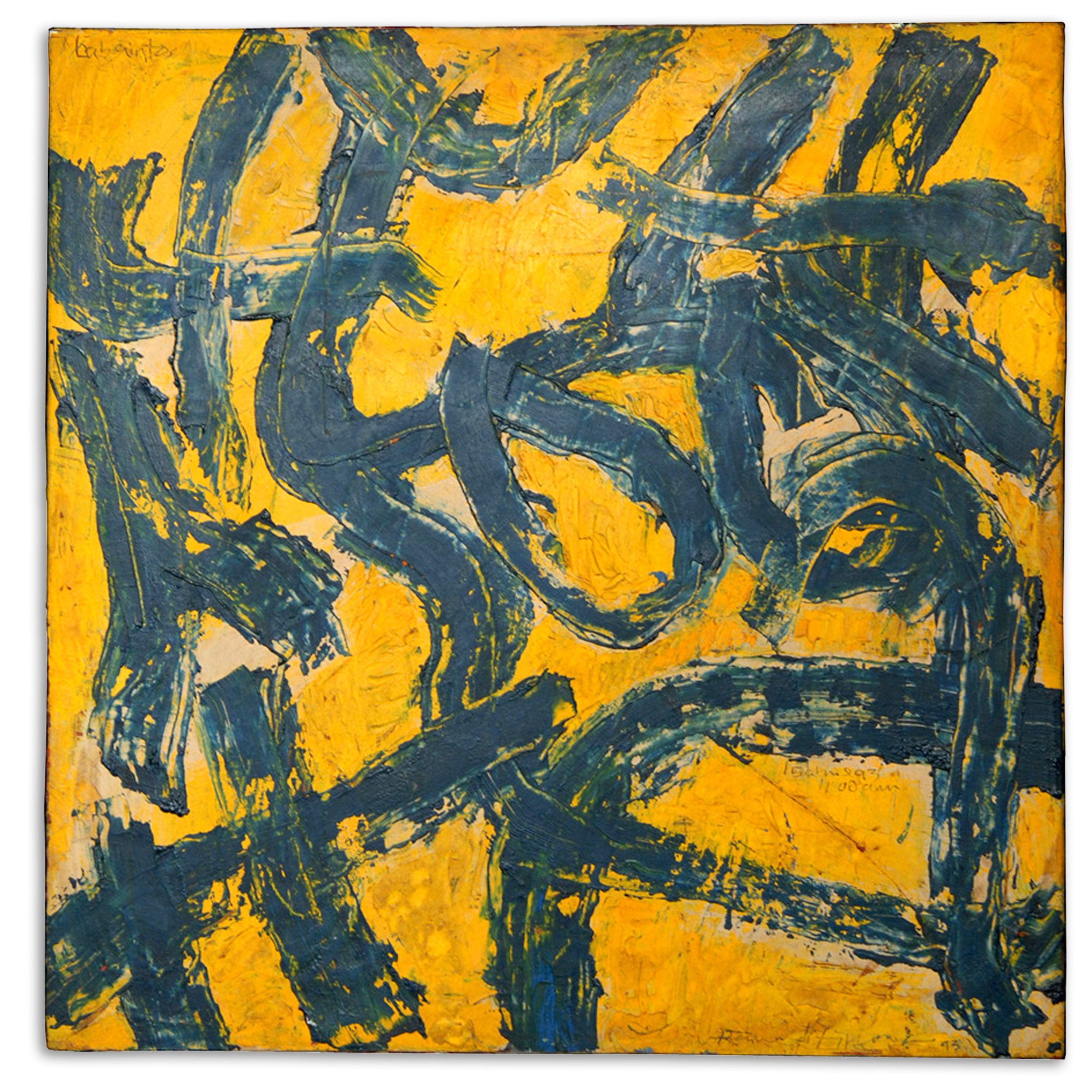Influence of Silence
Though the connection is not deliberate on his part, I see Figueroa as a spiritual heir to Vasily Kandinsky’s painting of the early 20th century. Both stress a relationship between the abstract expression of music and non-objective painting. Both have a sense of composing the elements of their paintings as a musical composer constructs a symphony. -Laura Roulet
-
By: Laura Roulet | Independent curator and art historian.
Published for the exhibition “Influence of Silence” from March 7 to April 23, 1995, at the Instituto de Cultura Puertorriqueña.
INFLUENCE OF SILENCE
As Raimundo Figueroa and I planned this exhibition, we disagreed over whether it should be considered a mid-career retrospective or not. He balked at the ponderous term, seeing the exhibit as a chance to show his recent large abstract paintings, which are informed by everything that has gone before them. For precisely this reason, I felt it was good opportunity to take stock of an oeuvre. The three phases of the Secret Dialogues, Symbols of Growth, and Influence of Silence are each fully realized, but at the same time culminate in the mature, bold canvases of Earth, Fire, Water and Grow Up. Figueroa’s work does not have one consistent “look”, in deed he resists being typecast; however, it has many consistent themes and practices. Foremost is his faith in the language of abstraction.
Rather than write a traditional, expository essay, I thought Figueroa himself, being a thoughtful and, frankly, a voluble person could articulate his own influences and intentions, as he does in the interview which follows. His visual sources range from the local flora and fauna to dream images. His inspirations stem from music, Jungian psychology, the Tao, and above all his emotions.
Though the connection is not deliberate on his part, I see Figueroa as a spiritual heir to Vasily Kandinsky’s painting of the early 20th century. Both stress a relationship between the abstract expression of music and non-objective painting. Both have a sense of composing the elements of their paintings as a musical composer constructs a symphony. Unlike American artists who made the formal concerns of abstraction the subject of their work, Kandinsky and Figueroa use abstract symbols to give the viewer a “handle” on the spiritual content of the painting. Whereas Robert Ryman declares of this “white paintings”: “I want to paint the paint,” Figueroa’s White Paintings express an emotional state of observation.
Also, like Kandinsky, Figueroa’s forms arise out of a Jungian sense of universal archetypes. The idea that a circular shape, whether a mandala or a halo, conveys a sense of spiritual wholeness, which is understood by all, consciously or unconsciously. Kandinsky writes in his Reminiscences of 1913: “I felt more and more clearly that it is not a question in art of the ‘formal’ but of an inner wish (=content) which imperatively determines the formal.” The artist’s internal reality determines the forms and colors composed aesthetically.
A minimal painting like White over Red may seem visually far removed from the high contrast complexity of Happiness, yet both depict the exploration of emotions. The Secret Dialogues convey the inchoate underpinnings of the internal thought process. The White Paintings eliminate the visual and psychic clutter on the surface, but retain the chaotic under painting beneath. The recent Influence of Silence paintings, with their bright colors and bold graphic style, are like blown-up projections of earlier motifs. As Figueroa comments in the interview: “the symbols have grown. They have become the whole painting.”
Throughout the surface changes of the works, the painting style remains the same: dense, many layered, spontaneous. As his titles suggest, his subject matter remains intensely personal and emotional. However, the feelings expressed – love and loss, illusion and disillusion, the desire to understand solitude, death, God – are universal.
TRUE LOVE 1993 60 x 72 inches Oil on canvas
HAPPINESS 1993 72 x 72 inches Oil on canvas
DISILLUSION 1993 72 x 72 inches Oil on canvas
ILLUSION 1993 72 x 72 inches Oil on canvas
LABERINTOS 1993 24 x 24 inches Oil on canvas
DUALITY I 1993 72 x 60 inches Oil on canvas
EARTH, FIRE AND WATER 1994 60 x 180 inches (3 panels 60 x 60 each) Oil on canvas
BIRTH OF A DOGON GOD 1995 50 x 39 inches Acrylic, oil, crayon, and graphite with collage elements on paper.
INFLUENCIAS DEL SILENCIO 1995 50 x 39 inches Acrylic, oil, crayon, and graphite with collage elements on paper.
TE EXTRAÑO (BESAME MUCHO) 1995 50 x 39 inches Acrylic, oil, crayon, and graphite with collage elements on paper.
INFLUENCIAS DEL RECUERDO 1995 50 x 39 inches Acrylic, oil, crayon, and graphite with collage elements on paper.
HELICONIAS 1997 50 x 39 inches Acrylic, oil, crayon, and graphite with collage elements on paper.











